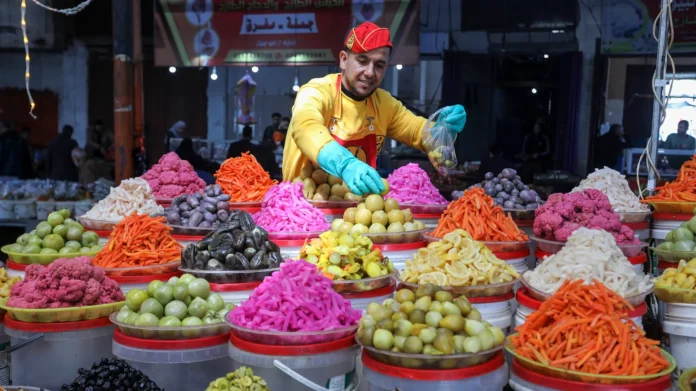The photo is excruciating to look at. The head of the child, who is suffering from acute malnutrition, is bony and too large for his frail body, giving the impression of a small old man. His ribs are visible through his fragile skin.
The image is from Kalma camp in Sudan, where hundreds of children have died in recent months due to food shortages and malnutrition during the conflict between Sudanese Arabs and Africans. Some 15,000 civilians have died in the war this year alone.
(Odd. I haven’t seen any angry gatherings on college campuses bewailing that carnage and deprivation and demanding a ceasefire.)
Something I have noticed over the past months—but not wanting to seem callous, I have been hesitant to point out—is the appearance of Gazan children.
When searching for photographs of victims of the malnutrition that countless aid groups and the UN have claimed for months exists in the region, I found only photos of young Gazans (and their elders) who seemed well-fed and healthy. Several photos portraying debilitated children turned out, upon closer reading, to show kids who were suffering serious congenital diseases, not malnutrition.
What emboldens me to now reveal the results of my informal photo research are two new studies.
One, by Columbia University Professors Awi Federgruen and Ran Kivetz, analyzed available data and reported that “the food supply entering Gaza is more than sufficient to feed all of the estimated 2.2 million Gazans according to what is considered a normal diet in North America.”
To be sure, there have been distribution problems regarding aid reaching the strip. Some of it is regularly stolen by Hamas or Gazan gangs, preventing trucks from reaching their destinations. But no one, it seems, is starving.
The second recent study, by Hebrew University professor Aron Troen and colleagues, also found that the aid to Gaza meets international nutritional standards.
The Troen study utilized data from the Coordination of Government Activities in the Territories (COGAT) Israeli Army unit, which is responsible for coordinating civilian matters with the Palestinians. Although aid delivery experienced many transportation and distribution problems during the first weeks of the war, the data shows that the major problems did not persist.
The quantity and nutritional composition of the food that was delivered between January and April this year, the study found, exceeded the internationally recognized Sphere Minimum Standards gauge for food security and nutrition.
The researchers calculated the calories, protein, fat and iron content of shipments to Gaza and divided the total by the estimated population size reported by the Gaza Central Bureau of Statistics. The daily per capita supply was then compared to Sphere standards.
The report concluded that the territory’s entire population, while dealing with shortages of particular products, were experiencing nothing remotely on the order of the near famine that was claimed by some international groups and media.
Jeremy Konyndyk, president of the US-based Refugees International, derided the study’s findings, telling Jewish Insider that assessing aid deliveries based on such measurements was merely “a math exercise” and not really “an indication of the actual household level consumption by people in Gaza.”
But the dearth of photos of emaciated Gazans would seem to confirm the studies’ findings. One wishes that the UN and aid groups so eternally eager to vilify Israel—along with the media so delighted to join the pile-on—might pay some heed.
And lo and behold, the United Nations Famine Review Committee just published a report, in which it said there is not enough reliable information to declare a famine in the northern Gaza Strip.
Gazan civilians have undoubtedly paid a terrible price in blood and stability for Hamas’ cynical use of the population for political gain. And there are shortages of some foodstuffs that were once abundant in Gaza before Hamas decided to bring destruction upon the populace. But no one, it seems, is near starving.
There is, though, a serious lack of one product. The Wall St. Journal recently reported that thousands of aid trucks are holding back from delivering supplies to Gazans for fear of being attacked. Cigarettes, it seems, are being smuggled into the territory in the trucks, which have been targeted both by the Gazan smugglers retrieving their smokes and other criminals trying to beat them to it.
A single cigarette, the paper reports, can sell for as much as $25 in Gaza.
And so, while there seem to be adequate calories and protein in the territory, the same cannot be said about tar and nicotine.
To read more, subscribe to Ami





















